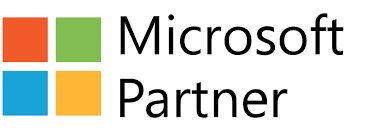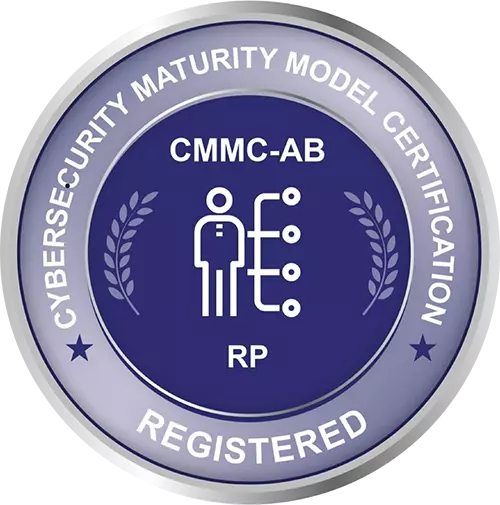
Since the Physician Quality Reporting System (PQRS) ended in 2016, healthcare providers have been faced with the challenge of transitioning to the new Medicare payment initiative program — the Merit-Based Incentive Payment System (MIPS). The MIPS transition brings with it expanded requirements for reporting performance data across a variety of quality and cost metrics. Physicians and practices must meet these new requirements if they hope to earn incentive payments and avoid financial penalties. In this piece, we will outline the primary differences between PQRS and MIPS and offer guidance for staying compliant and performing well on MIPS in 2019.
The Merit-Based Incentive Payment System is a national incentive system that offers payments to Medicare Part B providers for high-quality and cost-effective care. MIPS was introduced in 2017 by the Centers for Medicare and Medicaid Services (CMS) as one of two options within the Quality Payment Program (QPP). This performance-based incentive system is designed to reward eligible physicians and groups for providing quality and cost-effective care. It also aims to drive improvements in the healthcare field, lower the overall cost of care and increase healthcare information use.
MIPS streamlines several other Medicare incentive and payment programs into one system, so clinicians and group practices can better monitor their performance across various measures. The financial incentives provided to physicians and practices that perform well in MIPS are also meant to encourage improvements in the level of care provided.
This means all Medicare Part B providers should plan to participate in MIPS and must submit their data before the submission deadline to avoid penalties.
The implementation of MIPS means individuals and practices in the healthcare industry must now collect and report data in four different performance categories outlined in the MIPS requirements. Eligible individuals and groups that fail to participate in MIPS or fail to report in a category for which they are eligible can result in financial penalties. Providers that receive a low MIPS score may also receive a negative payment adjustment on their Medicare Part B reimbursements.
To earn a high MIPS score and positive payment adjustment, healthcare providers must adopt new data collection practices and commit to improving the quality and cost of their care in 2019.
The Physician Quality Reporting System was first introduced as the Physician Quality Reporting Initiative (PQRI) under the Tax Relief and Health Care Act of 2006 (TRHCA). PQRI was a voluntary payment initiative for reporting quality data and was the first national incentive program of its kind to be introduced by the Centers for Medicare & Medicaid Services (CMS). In 2008, PQRI became permanent under the Medicare Improvements for Patients and Providers Act of 2008 (MIPPA), and the incentive payments increased from 1.5 percent to two percent. In 2015, participation in PQRS became mandatory for all eligible providers.
The aim of PQRS was to collect data from physicians and group practices about the quality of care provided to Medicare. Based on these quality scores, providers were eligible for a positive or negative payment adjustment. PQRS Feedback Reports were issued to all participating clinicians and group practices so they could assess the quality of their services and identify ways to improve their care.
In 2017, the Physician Quality Reporting System ended when it was replaced by the Merit-based Incentive Payment System. The final program year for PQRS was 2016, and the final payment adjustments were distributed in 2018.
MIPS was designed to integrate and update various Medicare incentive and payment programs into a single system. MIPS consolidates PQRS, the Value-based Payment Modifier (VM) Program, also known as Value Modifier, and the Medicare Electronic Health Record (EHR) Incentive Program, also known as Meaningful Use. By merging these programs into a single system, MIPS provides a more comprehensive picture of provider performance and quality of care.
Because MIPS streamlines PQRS, the VM Program and the Medicare EHR Incentive Program, it is more comprehensive and extensive than PQRS alone. MIPS performance is measured by four categories — Quality, Improvement Activities, Promoting Interoperability and Cost. The Quality category of MIPS encompasses the performance measures previously reported through PQRS as well as the quality portion of the VM Program.
When transitioning from PQRS to MIPS, providers may notice similarities between the quality measures reported in PQRS and the performance measures of the MIPS Quality category. However, one of the primary differences between MIPS and PQRS is that, under MIPS, providers and groups are able to select their own quality measures. This update aims to address one of the biggest criticisms of PQRS by allowing clinicians and groups to select the most meaningful quality measures for their practice, as well as choosing their preferred reporting mechanism.
MIPS also requires fewer quality measures that must be reported, reducing the requirements from nine under PQRS to six under MIPS. By easing this requirement, MIPS allows physicians and groups to concentrate better on improving their chosen quality measures.
The other major difference between MIPS and PQRS is that MIPS includes the additional categories of Cost, Promoting Interoperability and Improvement Activities. The Cost category of MIPS replaced the VM Program, while the Promoting Interoperability, which was previously called Advancing Care Information, replaced the Medicare EHR Incentive Program.
The Improvement Activities category is a new category introduced with MIPS that is not rooted in a previous Medicare program. The Improvement Activities category measures how practices are working to improve their care processes, increase patient engagement with care and increase patient access to care. As with the Quality measures, physicians and groups can choose their own improvement activities that best suit their practice.
Participation in MIPS is mandatory for all eligible clinicians and practices, and those who fail to participate will receive a financial penalty. Beginning in 2019, eligibility for MIPS is determined twice each year instead of once, so practices that are not eligible at the start of the determination period should continue to monitor their eligibility throughout the Performance Year.
For the 2019 Performance Year, clinicians are eligible for MIPS if they:
The low-volume threshold includes three aspects — allowed charges for covered professional services, the number of beneficiaries for those services and the number of covered professional services provided. For 2019, providers are excluded from MIPS if they meet any of these low-volume thresholds:
Providers that fall under the low-volume threshold are not required to participate in MIPS but may choose to opt-in if they exceed at least one of the low-volume thresholds. For example, a physician who serves 250 Part B-enrolled individuals can choose to participate in MIPS even if their allowed charges and provided services do not exceed the low-volume thresholds.
Physicians and practices that are eligible for MIPS can choose between three participation options — as an individual, as a group or as a virtual group. These participation options also make it easier for low-volume physicians and practices to participate in MIPS.
To ensure Merit-Based Incentive Payment System compliance, providers must take steps to prepare for collecting and submitting MIPS data. Physicians and group practices can choose the best MIPS measures for their practice and then take steps to improve their performance. Providers can follow these steps for MIPS compliance to improve their performance scores and earn a greater MIPS incentive payment:
Some MIPS eligible providers can receive a special status designation if they fall under the 2019 special status qualifications. Providers with special status may receive reduced reporting requirements in some of the performance categories or have performance categories reweighed. For 2019, clinicians, groups and virtual groups can receive special status if they:
A provider that qualifies for special status will receive the designation automatically and does not need to apply.
Providers also have the option to apply for two exceptions that will reduce their reporting requirements if their application is approved. For 2019, providers can apply for the Promoting Interoperability Hardship Exception and the Extreme and Uncontrollable Circumstances Exception. If you believe your practice may qualify for an exception, explore the exception criteria and submit an application for approval before the end of the Performance Year.
Once you have determined that your practice is eligible for MIPS participation, you can then select the right MIPS participation option for you. If you choose to participate as an individual, you will report your MIPS data under your National Provider Identifier (NPI) number and a single Associated Taxpayer Identification Number (TIN). Your MIPS scores and payment adjustment will reflect your individual performance.
If you choose to participate as a group, you will submit MIPS data from each group member under a single TIN. Groups must contain at least two clinicians, one of whom is eligible for MIPS. When you report as a group, your MIPS scores and payment adjustment will be based on the performance of the entire group across all four performance categories.
The third participation type — a virtual group — was introduced in the 2018 MIPS Performance Year and allows clinicians to form a group with other practitioners who do not share the same TIN. Virtual groups must contain two or more unique TINs and can be made up of solo MIPS eligible practitioners, groups of 10 or fewer clinicians who share a TIN or a combination or individuals and groups. The virtual group participation option allows solo providers and groups to join virtually, regardless of their physical location or specialty.
MIPS participants are able to select their own Quality measures and Promoting Interoperability measures, as well as their own activities for the Improvement Activities performance category. This allows physicians and practices to choose the measures and activities that are most relevant to their practice, but it also requires more planning in advance for MIPS compliance and success.
Providers who hope to earn high scores in these categories should determine their performance measures and activities before the start of the Performance Year, as well as selecting their preferred reporting method for each category. This enables providers to choose the best methods for accurate and complete data collection.
For the Quality category, data must be collected during the entire Performance Year across six different quality measures. If a MIPS participant submits more than six measures, only the six measures with the highest scores will be counted. The option to submit additional Quality measures for scoring can help a provider boost their overall MIPS score, as Quality counts for 45 percent of the final score.
For the Promoting Interoperability category, data must be submitted for four or five Base Score measures depending on the participant’s certified electronic health record technology (CEHRT) edition. CEHRT edition also determines whether a participant chooses their Promoting Interoperability measures from the Promoting Interoperability Objectives and Measures set or the Promoting Interoperability Transition Objectives and Measures set. As with the Quality category, providers can choose to submit more than the required number of measures, with a cap at nine measures, and only the highest scoring measures will be counted. The Promoting Interoperability category accounts for 25 percent of the final MIPS score.
For the Improvement Activities category, which counts as 15 percent of the final score, participants must complete a combination of activities that total 40 points. This can be completed with two high-weighted activities, four medium-weighted activities or a combination of one high-weighted activity and two medium-weighted activities. Providers must plan to complete each activity over 90 continuous days during the Performance Year.
For the Cost category, all MIPS participants are scored using the same 10 performance measures, as long as they meet or exceed the specified minimum case volume for that measure. CMS collects Cost performance data directly from Medicare claims data, so physicians and practices do not need to submit data for this category. However, physicians and practices should still review the 2019 Cost performance measures so they can better gauge their performance and consider ways to provide more affordable and cost-efficient care.
Each MIPS category has different requirements for the completeness of the data submitted. If a participant does not submit enough data to meet this level of completeness, they will not be able to receive the maximum points for that performance category. Data completeness requirements also vary based on how a provider chooses to collect their data. MIPS participants should review the data completeness requirements for their collection type to ensure they submit enough data to receive a high score in that category.
The final step to MIPS compliance is to ensure your Quality, Promoting Interoperability and Improvement Activities data is submitted before the submission deadline. While submission deadlines may vary based on your collection method or submission type, most MIPS performance data is due before March 31st of the year following the Performance Year. For 2019, performance data must be submitted prior to March 31st of 2020. Providers should verify the submission deadline for their chosen submission type and make sure to meet that deadline so they can earn the highest MIPS score possible.
To achieve high performance scores and earn an incentive payment for the 2019 MIPS, clinicians and group practices must accurately collect medical data across a variety of measures and activities, while also improving their quality of care and reducing their healthcare costs. This means there is no room for error, and healthcare providers must seek streamlined and efficient information management systems.
Working with an HIM partner can help providers accurately collect and report their data while eliminating coding errors and staying on top of changing industry requirements. At Healthcare Resolution Services, we offer a variety of healthcare information management services, so your practice can enjoy improved productivity and accuracy. Healthcare Resolution Services can ensure your practice stays compliant with CMS regulations, while you focus on providing high-quality care to your patients. Contact Healthcare Resolution Services today to learn more.







Who We Are
Services
Career Opportunities
Interested in applying for a job with us? HCRS offers competitive compensation and benefits and hires a wide range of professionals. Apply Here

8601 Robert Fulton Drive, Suite 130 | Columbia, Maryland 21046 | Office: (301) 497-1187 Fax: (866) 384-2303
Copyright © 2025 Healthcare Resolution Services, Inc. All rights reserved. | Privacy Policy
